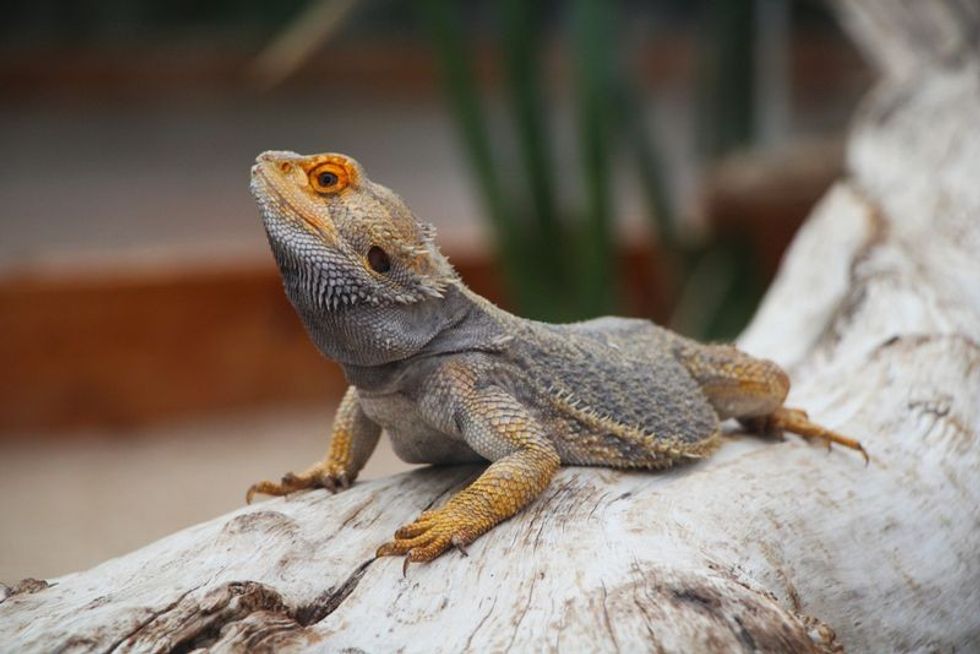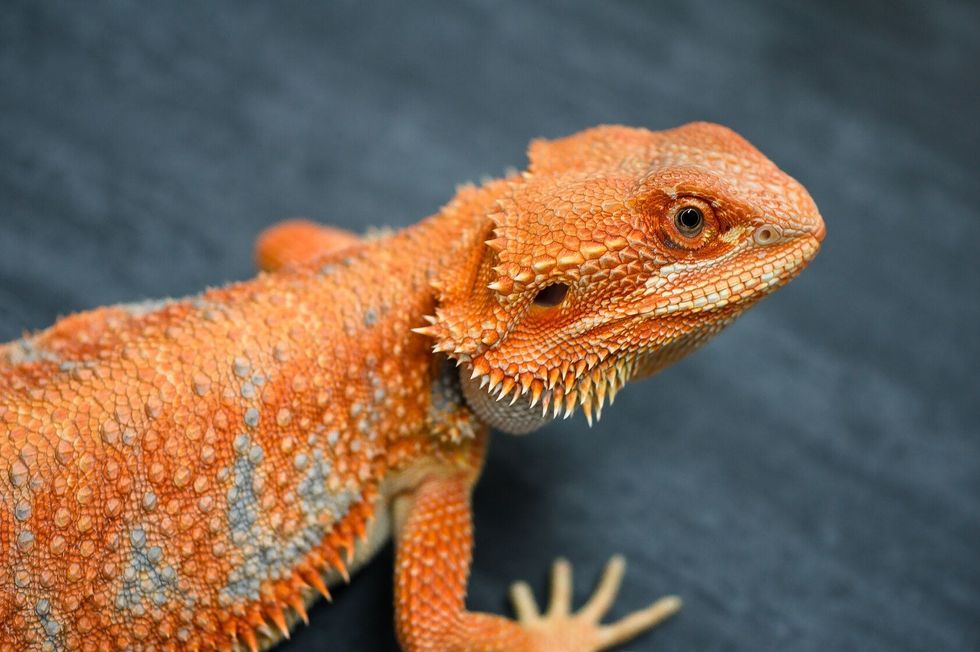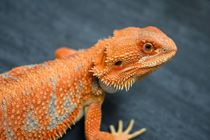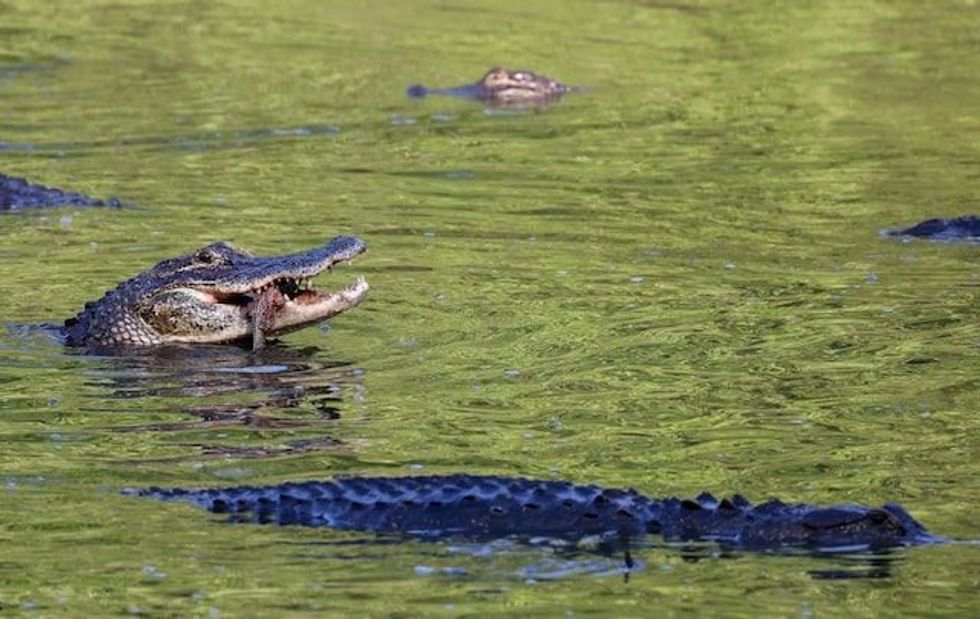Complete List Of All The Bearded Dragon Colors, Types And Morphs

Bearded dragons belong to the Agamidae family and Pogona genus.
These reptiles get their names from the spiny projections found under their chins. Due to their docile nature, they have become everybody's favorite pet reptile.
Their length is generally between 18-22 in (45.72-55.88 cm). Different bearded dragons have different characteristics and physical traits. Bearded dragons are extremists that either bask in the sunlight or live in pitch dark places.
This can depend upon the season. Bearded dragons are cold-blooded reptiles. This means they are not capable of producing their own body heat.
Their body mirrors the temperature of their surrounding. They must rely on outside sources to keep them warm in winter and cool during summer.
They change their habitats based on the climate. They are semi-arboreal, meaning they spend a good amount of time living in the tree canopies, jumping from one tree to another. Bearded dragons are indigenous to Australia's deserts.
They may also be found in arid regions, forests, savannahs, and scrublands. Morphs are carefully bred bearded dragons that are only found in captivity. Unlike the main species, morphs come in several striking colors.
If you do not know anything about bearded dragons, you will be a long way from recognizing your bearded dragon morph. Take a seat and read our content. It might not turn you into a pro overnight, but it sure does have a lot of information and fun facts about bearded dragons.
Once you have finished reading this article, you can also take a look at our other articles on bearded dragon bite and bearded dragon eggs, which will definitely pique your interests.
Types Of Bearded Dragon
Bearded dragons belong to the Agamidae family. There are seven species of bearded dragons.
Eastern Bearded Dragon: The eastern bearded dragon (Pogona barbital), also known as the bearded lizard and common bearded dragon, was described by Georgis Cuviver, a French naturalist and zoologist in 1829. Eastern bearded dragons have gray-black or red skin. The males are 24 in (61 cm) and the females are 20 in (50.8 cm).
These bearded dragons are mostly found in eastern Australia, south of Cape York Peninsula. One of the most interesting things about this dragon is that it can change sexes.
When the temperature is extremely hot, males can switch to females and even lay eggs. Fascinating, right. ?
Pygmy Bearded Dragons: The pygmy bearded dragon(Pogona henrylawsoni) is also known as the black-soiled bearded dragon and Rankin's dragon. It is endemic to Queensland in Australia. This bearded dragon was first described by Wells and Wellington in 1985.
It is often confused with the central bearded dragon due to its similarity. These bearded dragons are small.
Their length is less than 12 in (30 cm). Some of the other common names include Lawson's dragon, dumpy dragon, pygmy dragon, dwarf bearded dragon, or black soil bearded dragon. They are mostly tan or yellow.
Kimberly Bearded Dragon: The Kimberly bearded dragon (Pogona microlepidota) is found in the north-west remote regions of Australia. The range of this species is limited.
So they are not available for the pet trade. Spotting them in the wild is not easy, either. The Kimberly bearded dragon is 4-6 in (10.16 -15.24 cm) long and is available in two shades, tan and red.
Western Bearded Dragon: The western bearded dragon (Pogona minor) is found on the southwest coast and interior of Western Australia. Pogona minor, Pogona minor minima, and Pogona minor mitchelli are the three subspecies.
They are very small due to which these bearded dragons are also known as dwarf bearded dragons. This bearded dragon is very similar to the Nullarbor bearded dragon.
The length of this dragon is 14-18 in (35.56-45.72 cm). It is mostly tan. Brown variations can also be seen.
Northwest Bearded Dragon: Northwest bearded dragon(Pogona mitchelli) was named by Badham in 1976. We do not know much about this dragon due to the lack of information. The northwest bearded dragon is 18 in (45.72 cm) long. It is tan or red and is found in northwestern Australia.
Nullarbor Bearded Dragon: The Nullarbor bearded dragon (Pogona nullarbor) is found in South Australia and can measure up to 14 in (35.56 cm). Pogona nullarbor was first described by Badham in 1976. It is tan or brown in color.
Central Bearded Dragon: The central bearded dragon( Pogona vitticeps) is also known as the inland bearded dragon. Pogona vitticeps was described by Ernst Ahl (German zoologist) in 1926. This bearded dragon may reach a height of 24 in (61 cm).
It is mainly found in woodlands and deserts. Thermally-induced sex reversal is observed in this species. The central bearded dragon is yellow or brown and is found in Central Australia.
What colors do bearded dragons come in?
When somebody says bearded dragon, people generally picture a neutral-colored lizard. This is true. The seven main species are not colorful. Their bodies have brown and dirty yellow hues which easily blend with their habitat. This does not mean bearded dragons are not colored at all. Bearded dragon morphs come in a wide variety of colors, patterns and spottings.
Bearded dragon morphs come in almost all colors. Though they have basic names like yellow-bearded dragons and red-bearded dragons, the different shades of every color make each lizard attractive.
Some of the major colors are red, yellow, orange, white, silvery-white, gray, and green. These lizards come in colors that are difficult to be imagined. Every time people hear about the blue bearded dragon or the purple bearded dragon, they are baffled due to the variety of colors.
Some bearded dragon morphs such as the translucent bearded dragon have translucent spikes which make them almost see-through. Bearded dragons can also undergo some color changes in their life.
This is not analogous to a chameleon's ability to change colors. External factors like temperature and stress can cause mild color changes. When bearded dragons are stressed, their spikes turn black.
Your pet bearded dragon might appear white or exhibit any other color, which is completely different from the ones they had at the time you bought them. This can be an effect of shedding.
When bearded dragons go through shedding, they shed old layers and expose new layers of skin. These new layers might have some different colors.
When we say variations, it does not mean a leatherback bearded dragon will change into a zero bearded dragon after shedding a few layers of skin. Unless you are a magician, there is no way for this to happen. A bearded dragon's color will only change slightly.
Sometimes the change can even go unnoticed. Since bearded dragons shed their skin throughout their life, be prepared to see a few variations in colors.

What are bearded dragon morphs?
The variations observed within a single animal species are called morphs. Some bearded dragons that are bred to look a certain way are called bearded dragon morphs. Morph breeding is done to produce certain colors or patterns.
Most of the colorful reptiles are an outcome of morph breeding. Some of the morphs are rare, as breeding them is time-consuming and requires preciseness. The rarest morphs are on the pricier side due to this reason. Typically, your pet bearded dragons would have gone through a metamorphosis.
Metamorphosis refers to a complete change in appearance. Every morph has a unique trait that helps to differentiate them. These variations have special functions.
Now, coming to the tricky part, identifying your bearded dragon morph. Narrowing down the options and figuring out the morph is not easy unless you are a pro. We say so as there are more than 20 bearded dragon morphs.
The key to correctly identifying the morph is paying close attention to the details. For instance, hypo bearded dragon do not show any dark color variations and do not possess a black line at the back. This is its unique trait.
Bearded Dragon Colors By Morphs
There are over 20 different bearded dragon morphs. Choosing a color you favor can be very confusing. We have made it easy for you by listing the traits of each bearded dragon morph.
Yellow Bearded Dragon: Yellow bearded dragons are some of the most admired dragons due to their golden-colored skin. The dragon's price can be anywhere between $100-300 if purchased from a private breeder.
Apart from the basic yellow hue, there are four yellow variants apart. Visible differences can be observed in the patterns and color across the different species. The different colors are citrus, green, lemon fire, and sandfire gold.
The deep red and orange stripes along the backbone are very prominent in the citrus species. Blue-gray patterns can be seen next to the stripes.
The juveniles are olive green. If this color is kept even when they step into adulthood, these dragons are known as green bearded dragons. The captivating color of the lemon fire bearded dragon is underrated.
Red Bearded Dragons: As the name implies, red bearded dragons have red highlights and markings. These dragons are mostly bred in captivity.
The red bearded dragon is quite common and will cost less. The red bearded dragon was one of the first kinds to be developed when bearded dragons were brought into the market in the '90s.
Even though the red bearded dragon is very common, it appears in a variety of red tints. Brownish red tones and bright red tones are popular. The ruby red bearded dragon's popularity is rising.
Unlike the other members of the group, the ruby red bearded dragon is highly expensive. Breeding two bearded dragons with bright red colors will produce darker shads of red-bearded dragons.
White Bearded Dragon: White bearded dragons are not easy to spot. One of the most interesting things about a white bearded dragon is, it changes its colors depending on the temperature. The lizard acquires a gray color when the temperature drops. These bearded dragons have a few spots that are colored.
Black Bearded Dragon: Imagine a full, black bearded dragon popping out of nowhere. Scary! But this is unlikely as out of all the darker shades of bearded dragons that have been identified so far, none have been entirely black.
Albino Bearded Dragon: The albino bearded dragon is very similar to a white-bearded dragon. The only difference is albino bearded dragons have red eyes. These dragons die sooner than the others. Reports state that they only survive for a few weeks.
They can also be produced naturally. This is because they do not produce melanin or absorb UVB rays. Calcium digestion in this reptile is not efficient.
Wero Morph: The wero morph is created by combining the witbilts and zero morphs. The wero morph looks just like zero morphs. The only characteristic differentiating it from the parent morphs is the dark specks on its tail.
Paradox Bearded Dragon: The paradox bearded dragon has a well-defined pattern. It is exclusively bred for its pattern. It has a bunch of colors like white, orange, and gray on its back and tail.
The proportions and combinations are different from one dragon to another. This makes them unique.
These bearded dragon morphs are said to be the most beautiful ones. Some of them have a full lavender body with spots of other colors while others only have hints of lavender. Lavender is not the only color, this morph can be of any color.
Breeders call this morph purple paradox and bearded dragon paradox. Though half of them are not even purple breeders still call them so.
Experts say this is just an attempt to put them in the spotlight. A purple bearded dragon sure sounds interesting, but this morph is already in the spotlight and does not need the name 'purple paradox' to make it one of the most desired morphs. This morph has distinct colors, patterns and scales.
Orange Bearded Dragon: There are several variations in the orange color observed in this bearded dragon morph. Breeding a yellow bearded dragon and a red bearded dragon will give an orange bearded dragon. Orange bearded dragons are available in colors, including tangerine, sunburst, and fire.
Dunner Bearded Dragon: The name Dunner bearded dragon is given to honor the breeder who created this bearded dragon. You can recognize the Dunner morph just by taking a look at its pattern. This lizard has its scale growing in different directions.
The unorganized scales will catch your eye right away. Dunner morph also has more scales than all other morphs. This is one of the rare morphs.
Hypomelanistic Morph: Hypomelanistic means below normal color. Hypomelanistic dragons are unable to produce darker shades and are available only in pastel colors. They have clearer nails.
When compared to a conventional morph, Hypomelanistic variants have a subdued hue. These morphs can be found in every nook and corner. The body length and patterns are similar to that of the standard morph.
Witblits Bearded Dragon: Just like the Dunner bearded dragon, a witblits bearded dragon can also be identified easily due to its patternless body. The name of this bearded dragon is quite confusing, as 'witblits' translates to 'white lightning'. However, these bearded dragon morphs are not completely white.
They are either beige or silvery-white. The explanation behind the naming is when these dragons were bred, there was no other morph that was close to being white. This is why the name was given.
Did you know, breeding silkback bearded dragons has been controversial? Two leatherback bearded dragons are bred to produce a silkback bearded dragon. During the mating process, the male hurts the female leatherback bearded dragon badly by biting their necks and tails. Some females even die during the process. This is why most of the breeders avoid breeding them.
Did You Know...
Bearded dragons secrete a mild venom. This venom and rattlesnake venom have the same power. Luckily, it does not harm humans. The mild venom is only used to kill small animals.
It does not have an effect on big animals. Most of the morphs originate from Pogona vitticeps (Central bearded dragon). Pogona vitticeps can be easily identified. The pink color layer of the inner mouth grabs your attention when it opens its mouth.
Bearded dragons can wave when they see a familiar face in the room.
Difference or change in physical or behavioral characteristics observed between organisms within the same species is called morph. There are three types of morphs, color, scalation, and pattern.
Color morph refers to the variations observed or created in the color of an animal. Animals have textured skin. This is due to the presence of scales and, in the case of bearded dragons, both scales and spiny structures.
These structures that add texture to the bearded dragon's skin are called patterns. Patterns might differ from one species to another and help in identifying the animal.
The normal bearded dragon, also known as the original dragon, has spikes all over its back.
Here at Kidadl, we have carefully created lots of interesting family-friendly facts for everyone to enjoy! If you liked our suggestions for bearded dragon colors, then why not take a look at bearded dragon gender or bearded dragon teeth?
We Want Your Photos!
More for You
Doctorate specializing in Veterinary Medicine

Oluniyi AkandeDoctorate specializing in Veterinary Medicine
With an accomplished background as a Veterinarian, SEO content writer, and public speaker, Oluniyi brings a wealth of skills and experience to his work. Holding a Doctor of Veterinary Medicine degree from the University of Ibadan, he provides exceptional consulting services to pet owners, animal farms, and agricultural establishments. Oluniyi's impressive writing career spans over five years, during which he has produced over 5000 high-quality short- and long-form pieces of content. His versatility shines through as he tackles a diverse array of topics, including pets, real estate, sports, games, technology, landscaping, healthcare, cosmetics, personal loans, debt management, construction, and agriculture.
Disclaimer
1) Kidadl is independent and to make our service free to you the reader we are supported by advertising. We hope you love our recommendations for products and services! What we suggest is selected independently by the Kidadl team. If you purchase using the Buy Now button we may earn a small commission. This does not influence our choices. Prices are correct and items are available at the time the article was published but we cannot guarantee that on the time of reading. Please note that Kidadl is a participant in the Amazon Services LLC Associates Program, an affiliate advertising program designed to provide a means for sites to earn advertising fees by advertising and linking to Amazon. We also link to other websites, but are not responsible for their content.
2) At Kidadl, we strive to recommend the very best activities and events. We will always aim to give you accurate information at the date of publication - however, information does change, so it’s important you do your own research, double-check and make the decision that is right for your family. We recognise that not all activities and ideas are appropriate for all children and families or in all circumstances. Our recommended activities are based on age but these are a guide. We recommend that these ideas are used as inspiration, that ideas are undertaken with appropriate adult supervision, and that each adult uses their own discretion and knowledge of their children to consider the safety and suitability. Kidadl cannot accept liability for the execution of these ideas, and parental supervision is advised at all times, as safety is paramount. Anyone using the information provided by Kidadl does so at their own risk and we can not accept liability if things go wrong.
3) Because we are an educational resource, we have quotes and facts about a range of historical and modern figures. We do not endorse the actions of or rhetoric of all the people included in these collections, but we think they are important for growing minds to learn about under the guidance of parents or guardians.







